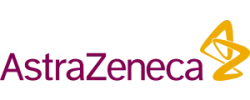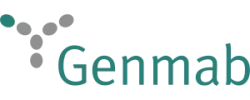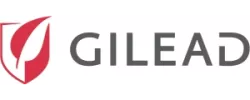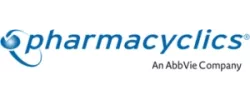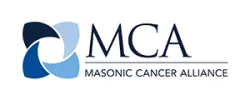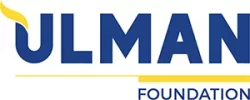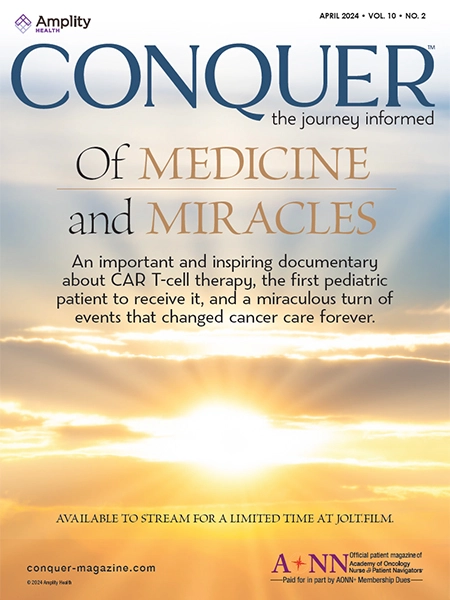Here are more recaps from the outstanding presentations delivered at the Academy of Oncology Nurse & Patient Navigators (AONN+) 2023 Midyear Conference.
- Managing Polypharmacy: What Navigators Should Know
- Chronic and Complex Care Navigation: Improving Patient Care by Addressing Basic Needs
- Understanding the Art Behind an Abstract
Managing Polypharmacy: What Navigators Should Know
Polypharmacy, the regular use of at least 5 medications by patients, has become a complex issue, particularly in the field of oncology. Patients with chronic conditions and comorbidities often face the challenge of managing various medications to treat these conditions alongside their cancer treatments, and many of them are attempting to juggle it all on their own.
The complexity of these multiple medication regimens can create a tremendous burden for patients, but enhancing coordination among providers and increasing patient education can help to reduce polypharmacy-related complications and improve patient outcomes.
At the 2023 AONN+ Midyear Conference in Orlando, a panel of experts explored the challenges posed by polypharmacy in oncology, and discussed management strategies for navigators and the entire multidisciplinary care team.
Challenges in Polypharmacy Management
Dealing with polypharmacy in oncology is complex for a number of reasons: patients may arrive to the cancer center with a significant medical history, multiple chronic diseases, and numerous medications from various sources. While some develop these chronic conditions prior to their cancer diagnosis, others develop these issues as a result of their cancer therapies.
Undergoing cancer treatment further compounds the management of chronic diseases, and the involvement of multiple providers, pharmaceutical companies, and medication sites adds to the intricacy of medication management. Additionally, the lack of sufficient education about the challenges and potential dangers of polypharmacy only exacerbates the substantial burden placed on patients.
According to Ginger Blackmon, PharmD, Assistant Director of Clinical Initiatives at the National Community Oncology Dispensing Association (NCODA), the potential consequences of polypharmacy in oncology include medication errors, poor adherence, drug-drug interactions, chemotherapy toxicity, higher pill burden, suboptimal postoperative outcomes, and negative clinical outcomes, overall.
“So many of us help manage medications for family members, neighbors or friends,” noted Billie Lynn Allard, MS, RN, FAAN, Administrative Consultant for Population Health and Transitions of Care at Southern Vermont Health Care. “We have trouble doing that even as nurses, so I think it becomes a chronic anxiety in our specialty: wondering how people are handling [polypharmacy] without a family member or neighbor who’s a nurse.”
As part of an exercise at her center, nurses were partnered with primary care providers to follow high-risk chronic care patients across the care continuum, in order to see how patients were actually managing their medications.
She says what they found was “terrifying.” It wasn’t unusual for patients to have their medications in the wrong bottles, to have several different medications in one bottle, to be taking discontinued medication because it was free from Medicare, or to have several conflicting medication lists from 3 or 4 providers.
“It was worse than we had imagined,” she said. “They had medications from the past 15 or 20 years from their friends or family members. Many of them were overwhelmed and asking us what to do with all of it.”
This approach allowed Ms Allard and her colleagues to gain a comprehensive understanding of patients’ medication management challenges, and to identify some important roadblocks.
For example, some patients weren’t picking up their medications because they didn’t have transportation, which was leading to readmissions and ED visits. “And some patients had so many medications that they weren’t willing to take all of them,” she added. “They were picking and choosing which of those medications they were going to take, but they weren’t being truthful about it to their doctors and nurses.”
Solutions to Polypharmacy Challenges
According to Dr Blackmon, proactive financial navigation, including copay cards, foundation support, and patient assistance programs, can help improve medication access and affordability, while advocacy and legislation efforts are critical in reducing medication costs and increasing access. Routine patient outreach, patient education resources (such as oral chemotherapy education sheets), and tools like pill calendars can also aid in promoting patient adherence and understanding.
Regular medication reconciliation in the EHR by the entire medically integrated practice team is a vital step in reducing polypharmacy challenges; involving physicians, APPs, pharmacists, nurses, and navigators in open discussions about all medications being taken can enhance patient safety and reduce clinical fragmentation.
Telehealth and telepharmacy have also emerged as valuable tools (particularly post-COVID), providing increased accessibility and convenience for patients, especially in terms of clinic access and transportation challenges.
Fostering an open and nonjudgmental environment where patients feel comfortable disclosing their use of over-the-counter medications, supplements, and herbal remedies is also crucial. Utilizing resources like the Memorial Sloan Kettering app “About Herbs” helps identify potential drug-drug interactions, particularly in chemotherapy treatments, Dr Blackmon noted. “It’s important to just ask,” she added. “It’s amazing how patients simply haven’t been asked about what they’re taking.”
The challenges of polypharmacy are multifactorial, involving an aging population with multiple chronic conditions, utilization of multiple providers and pharmacies, and patient hoarding. But ensuring effective coordination and communication among the entire multidisciplinary care team, in addition to increasing patient understanding of the topic, is essential in reducing polypharmacy challenges.
Chronic and Complex Care Navigation: Improving Patient Care by Addressing Basic Needs
Chronic and complex care navigation requires addressing patient barriers through a personalized approach to care. But perhaps most importantly, it first requires recognizing the importance of social determinants of health (SDOH), such as access to food, water, shelter, and transportation. The fulfillment of these needs is often taken for granted by those of us who don’t have to worry about them, and as a result, the critical role these factors play in patients’ overall well-being, particularly those with chronic conditions, is too often overlooked in healthcare.
According to Billie Lynn Allard, MS, RN, FAAN, Co-Program Director of the Association of Chronic and Complex Care Nurse Navigators (ACCCNN), the realization that these basic needs must be met to ensure effective healthcare was a sobering revelation for her.
“One of the most critical things that we found when we started down this road is that we had totally neglected asking about the social determinants of health, and that just made me so sad,” she said at the 2023 AONN+ Midyear Conference in Orlando. “If patients don’t have food, water, shelter or transportation, then how are we going to help them recover from cancer or chronic disease?”
Approximately 45% of all Americans suffer from one or more chronic diseases, which are among the most prevalent and costly health conditions in the United States. ACCCNN, a new professional organization (and sister organization to AONN+), was designed to elevate and advance the role of the chronic and complex care nurse, and provides a much-needed platform to educate, support, and empower chronic and complex care nurse navigators in driving transformative patient-centered care.
“Our goal with this organization is to, hopefully, give our chronic and complex care navigators what AONN+ has given to oncology navigators,” said Jennifer Edwards, BSN, RN, OCN, Co-Founder and Co-Program Director of ACCCNN and Nursing Leader at Banner Health in Phoenix, AZ.
These navigators coordinate care across multiple sites of service within complex health systems, all while eliminating barriers to timely medical care and providing personalized chronic disease education and referrals to meet their patients’ needs. The inaugural ACCCNN Summit will be held November 19-20, 2023, in San Antonio, TX.
According to Ms Allard, after realizing the significance of SDOH, her small community hospital set out to connect with community agencies and find innovative solutions to improve access to food and shelter. They collaborated with schools and food pantries, engaged with the housing board, and actively participated in community initiatives to address the underlying factors that were impacting healthcare outcomes in her community. This shift toward recognizing the importance of holistic care and the integration of healthcare with the broader community was significant.
“When we started doing this, we discovered that we needed to do everything differently from what we were doing before,” she said. “It uncovered a whole world of what nurses can do within a community that will make a difference.”
According to Ms Edwards, improved documentation and charting is a crucial component to addressing SDOH. Her organization has started an initiative to add SDOH to the electronic health record in a more tangible way.
“My team of navigators were already doing this, but they didn’t realize it because there wasn’t a charting mechanism to show that it was being done,” she said. “Through this initiative, along with more IT support, we’re going to be able to show that we’re doing better than we thought. But we still have a long way to go.”
Ms Allard also highlighted the importance of involving multidisciplinary teams and social workers in ensuring that basic needs are being met for patients. These efforts should reach beyond the walls of the hospital, and involve entire communities, she said.
“Social workers need to be at our elbow,” she added. “We need to recognize that if we don’t take care of the basic needs of our patients, the rest of their healthcare is not going to be effective. This is where we have to start.”
Understanding the Art Behind an Abstract
Writing an abstract is not unlike creating art, according to Beth Matthews, MSN, RN, OCN, ONN-CG, Division Navigation Director at Sarah Cannon Cancer Institute/North Carolina Division. With both art and abstracts, many people doubt their abilities, think they’re not good or creative enough, and in the end, don’t create anything at all.
But simply knowing how to go about writing a research abstract can make all the difference. In order to create a masterpiece, the artist needs supplies; to create an abstract, so does the navigator.
“So the question is, what is keeping you from writing your own abstract masterpiece?” Ms Matthews asked at the 2023 AONN+ Midyear Conference in Orlando.
Why Create an Abstract?
Abstracts are used to communicate complex research in a concise manner, and may act as a stand-alone entity instead of a full paper.
When it comes to demonstrating value and enhancing the credibility of navigation, building on evidence-based research in the field is crucial. New research also helps navigators to discover and share novel ideas, and in turn, improve on existing processes. Ms Matthews pointed out that it’s not a problem to replicate another study, as this only serves to strengthen the prior hypothesis. Envision it as an artist tracing an existing image onto a canvas but making a new work of art that’s all their own, she said.
Conducting new research also advances professional development by challenging navigators and helping them hone their problem-solving and presentation skills.
“So we need your help in developing evidence-based research abstracts about navigation,” she said.
Gathering Your Supplies for Creating an Abstract Masterpiece
Ms Matthews admits that getting started on an abstract can seem incredibly daunting, but it all starts with an initial step: formulating a research question.
Just like there are 4 sides to a canvas, formulating a research question for an abstract can be tackled by considering 4 components of a framework: problem/population, intervention/improvement, comparison, and outcome.
First, define the problem by figuring out what question you want answered. For example, in your navigation program, is advance care planning being addressed? If so, at what point in the cancer journey? Ms Matthews encourages navigators to “find their why” and define a research question that means something to them personally.
Moving to the next section of the canvas, define your intervention/area of improvement: ie, introducing conversations about advance care planning in the survivorship phase, or adding questions about advance care planning to the patient intake form.
The comparison is just that: comparing the current state of something to how it can be improved. In the example of advance care planning, compare the prior to the new proposed process.
When it comes to the outcome, it’s all about the data. “This is probably the part that scares us the most,” she said. “How do we collect the data? How do we analyze the data? And then, what do we do with it?”
She encourages navigators to do what comes most easily to them in terms of tracking data. If you’re a whiz at making Excel spreadsheets, use that method. If you’d rather pay a fee and compile less data on your own, consider a service like SurveyMonkey. “But the data is so important, because ultimately, it’s going to tell us what’s going on,” she said.
Writing Your Abstract
According to Ms Matthews, the “second scariest” part of writing an abstract tends to be deciphering the terminology involved, but she encourages navigators to think of these words as a foreign language. We may not use words like “framework,” “prospective,” “retrospective,” “quantitative,” and “qualitative” on a daily basis, but countless resources exist online to help make sense of these terms.
An abstract should include a title, author names, background, objectives, methods, results, and conclusions. But as with making art, these don’t have to be completed in a certain order, according to Ms Matthews. If the title is written last, no problem.
She offered a few simple tips: write in a concise manner, pay attention to word limits (these vary according to publisher), present only unbiased research, use an agnostic format (no use of “I,” facility name, etc), and use literature databases to fill out historical background.
“Get together with your peers, and find navigators with the same passions who want to answer these same questions,” she urged. “It’s a lot easier to divide and conquer with your peers than it is to do all of this on your own.”
When you’re finally ready to step back and look at your results, you may realize that they don’t correlate with your objectives or hypothesis, but be sure to detail these unexpected or negative findings in your abstract. These types of results can be just as helpful as positive findings in terms of research, as they show other navigators what not to do.
“It’s okay if it doesn’t come out the way you thought it would,” she said. “[Your intervention] might not have worked at all, but that’s still telling us that no significant difference was seen in evidence-based practice.”
“Most importantly, making bad art is better than making no art,” she concluded. “So go out and make some art.”

